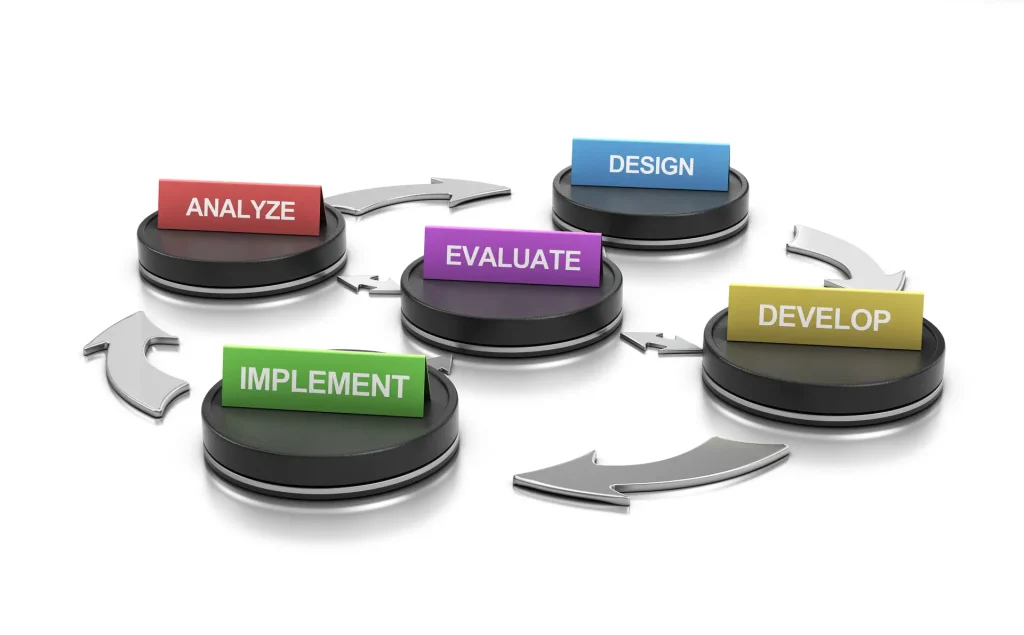Do you need Website Design and Development services? Contact me today!
Table of Contents
My Guide to Website Design and Development: A Dunedin Web Designers Perspective
A website serves as the cornerstone of a company’s online presence. It’s the virtual storefront, the interactive brochure, and the primary point of contact for potential customers. However, building a website is not just about putting together a few web pages. It’s a meticulously crafted process that involves various stages, from conception to execution. As a web consultant, I’ve navigated through these stages countless times, helping businesses establish and enhance their online presence. In this guide, I’ll walk you through the multistage journey of website design and development starting with understanding your requirements right through to the launch of the project and the ongoing support and maintenance of it.

Understanding the Client’s Vision
Every successful project begins with a clear understanding of the client’s goals, target audience, and brand identity. As a consultant, I dig deep into discussions with the client to grasp their vision for the website. What are your objectives? What message do you want to convey? Understanding these aspects is crucial for laying the groundwork for the project.
Planning and Research
With your vision in mind, the next step involves meticulous planning and research. This includes analysing competitors’ websites, identifying industry trends, and outlining the website’s structure and functionality. It’s essential to create a detailed roadmap that includes site architecture, navigation flow, and user experience considerations.
Wireframing and Prototyping
Before diving into the design phase, it’s important to create wireframes and prototypes. Wireframes act as skeletal blueprints, outlining the placement of elements on each page. Prototypes, on the other hand, provide a tangible representation of your website’s functionality and user interface. These early-stage mockups allow for feedback and iteration, ensuring that the final product aligns with your expectations.
Visual Design
Once the wireframes and prototypes are approved by you, it’s time to breathe life into the website through visual design. This involves selecting color schemes, typography, images, and other design elements that resonate with the brand identity. The goal is to create a visually appealing interface that captivates users while maintaining consistency across all pages.
Front-end Development
With the design finalised, front-end development comes into play. I will translate the visual design into code, using languages like HTML, CSS, and JavaScript. My primary focus is on creating a responsive, user-friendly interface that functions seamlessly across various devices and screen sizes. Accessibility and performance optimisation are also key considerations during this part of the project.
Back-end Development
While front-end development deals with the presentation layer, back-end development handles the behind-the-scenes functionality of the website. This includes database management, server configuration, and application logic. I often work with frameworks and programming languages such as PHP, Python, Ruby on Rails and Node.js, depending on your projects requirements. Choosing the correct programming language when website design and development is required is crucial to the success of your online project.
Content Management
Content is the backbone of any website. Whether it’s text, images, videos, or interactive elements, managing content effectively is crucial for a seamless user experience. Content management systems (CMS) like WordPress, Drupal, or Joomla provide a user-friendly interface for you to update and publish content without relying on technical expertise.
Testing and Quality Assurance
Before the website goes live, rigorous testing is conducted to identify and resolve any bugs or issues. This includes functional testing to ensure all features work as intended, compatibility testing across different browsers and devices, and performance testing to optimise loading times. I use QA software which plays a vital role in ensuring your website meets the highest standards of usability and reliability.
Deployment and Hosting
Once the website has been thoroughly tested and approved, it’s time for deployment. This involves configuring servers, domain settings, and transferring files to the hosting environment. Choosing the right hosting and email provider and plan is essential to ensure optimal performance, security, and scalability for your website. I host most of my clients websites and online projects myself at KiwiServer.co.nz as this allows me to provide a better website management and maintenance service post launch.
Launch and Maintenance
The culmination of days (or months, depending on the project scale) of hard work arrives with the website launch. However, this is just the beginning of the journey. Continuous monitoring, updates, and maintenance are essential to keep the website running smoothly and securely. As a consultant, I often provide ongoing support to clients, helping them adapt to evolving technologies and market trends.
Website Design and Development is a multifaceted process that requires meticulous planning, creativity, and technical expertise. From understanding the client’s vision to deploying the website and beyond, each stage plays a crucial role in delivering a successful online presence. As a web consultant, I am committed to guiding businesses through this journey, helping them achieve their goals and stand out in the digital landscape.
Get in touch with me today and have a chat over coffee! Get some free no obligation advice to get you pointed in the right direction with your Website Design and Development.

